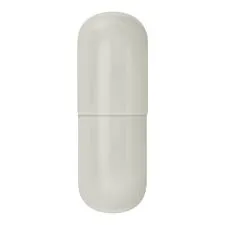
des. . 12, 2024 05:14 Back to list
hpmc chemical
The Role of HPMC in the Chemical Industry
Hydroxypropyl Methylcellulose (HPMC) is a versatile polymer that plays a significant role in various chemical industries, thanks to its unique physicochemical properties. Widely used in different applications, HPMC is a cellulose derivative that is non-ionic and has excellent film-forming, emulsifying, and thickening properties. This article explores the functions, applications, and advantages of HPMC in the chemical sector.
What is HPMC?
HPMC is synthesized from natural cellulose through chemical modification, where hydroxypropyl and methyl groups are introduced to the cellulose backbone. This modification enhances its solubility in water and organic solvents, making it an ideal additive for numerous applications. HPMC is commonly available in various grades, differing in viscosity, substitution levels, and other parameters to meet specific functional requirements.
Applications of HPMC
1. Construction Industry In the construction sector, HPMC is a critical component in cement-based products such as tile adhesives, plaster, and grout. It serves as a thickening agent, improving the workability and adhesion of these materials. HPMC also contributes to water retention, which is crucial for better hydration of cement and enhanced durability of the final product.
2. Pharmaceuticals HPMC is widely used in the pharmaceutical industry for its properties as a binder and filler in tablet formulations. Its ability to form gels in the presence of water makes it suitable for sustained-release formulations. Additionally, HPMC is employed in the production of capsules and as a coating agent, offering protection against moisture and enhancing the stability of active ingredients.
3. Food Industry In the food industry, HPMC acts as a thickening and stabilizing agent. It is used in various products such as sauces, dressings, and ice creams to improve texture and mouthfeel. Additionally, HPMC is regarded as a food-grade additive, providing an alternative to gelatin, making it suitable for vegetarian and vegan formulations.
4. Personal Care Products HPMC finds extensive use in the formulation of personal care products, including shampoos, conditioners, creams, and lotions. It helps to enhance the viscosity and stability of these products while providing improved texture and spreadability. The compatibility of HPMC with many other ingredients makes it a preferred choice for formulators in the industry.
hpmc chemical

5. Agricultural Chemicals In the agricultural sector, HPMC is utilized as a thickening agent in pesticide formulations. It can enhance the viscosity of the spray, ensuring uniform coverage on crops and improving adhesion to plant surfaces. This property aids in the effectiveness of active ingredients, resulting in better crop protection.
Advantages of Using HPMC
The benefits of HPMC in various applications are numerous
- Non-toxic and Biodegradable HPMC is considered safe for use in food and pharmaceuticals due to its non-toxic nature. Additionally, it is biodegradable, making it an environmentally friendly option.
- Versatility With its adaptability across different industries, HPMC can be tailored to specific requirements, ensuring optimal performance regardless of the application.
- Stability and Consistency HPMC provides consistent results due to its stable properties under various environmental conditions, such as temperature and pH changes.
- Enhanced Performance Whether used in construction materials or food products, HPMC enhances the performance of formulations, leading to better quality and longevity.
Conclusion
In summary, Hydroxypropyl Methylcellulose (HPMC) is a crucial additive in the chemical industry, with applications spanning construction, pharmaceuticals, food, personal care, and agriculture. Its unique properties make it a versatile and valuable ingredient that adds functionality and performance to various products. As industries continue to evolve and seek innovative solutions, the importance of HPMC is expected to grow, highlighting its role as a vital component in modern formulations. With its non-toxic nature and environmental benefits, HPMC not only meets the demands of today’s markets but also aligns with the growing emphasis on sustainability. The future of HPMC in the chemical domain looks promising, paving the way for new innovations and applications.
-
Why HPMC is a Key Additive in Wall Putty Formulations
NewsAug.05,2025
-
Redispersible Powder in Decorative Renders: Function Meets Finish
NewsAug.05,2025
-
Redispersible Powder for Interior Wall Putty: Smooth Results Every Time
NewsAug.05,2025
-
HPMC’s Water Retention Capacity in Dry Mortar Applications
NewsAug.05,2025
-
HPMC Factory Contributions to Liquid Detergents
NewsAug.05,2025
-
How HPMC Factory Products Change Detergent Textures
NewsAug.05,2025







